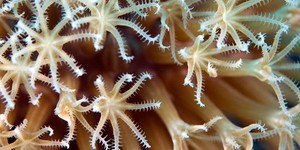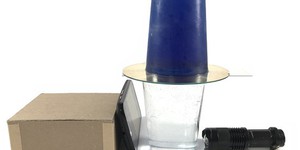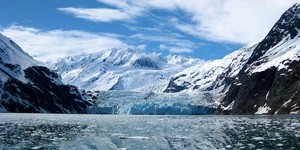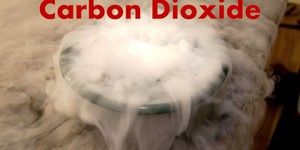Ocean Sciences Lesson Plans (4 results)
About 70% of Earth's surface is covered by oceans but humans have only explored 5% of the ocean! From microscopic phytoplankton to pods of whales and global weather patterns there is a lot left to discover.
|
Select a resource
Sort by
|
Lesson Plan
Grade: 2nd-6th
5 reviews
By building an edible coral polyp, students will learn the anatomy of coral and be able to explain why corals are animals, rather than plants.
Read more
NGSS Performance Expectations:
Lesson Plan
Grade: 6th-8th
1 review
Why is the ocean vital to our planet? There are many reasons, but one important one is that the ocean is a major player in regulating our weather and climate through currents. In this lesson plan, your students will model ocean currents with cups, water, and food coloring, and explore how temperature and density differences set deep ocean waters in motion to create a global oceanic circulation system.
Read more
NGSS Performance Expectations:
New
Lesson Plan
Grade: 6th-9th
In this lesson plan, students will model the complex biologic manufacturing process. First, they will model the cellular expansion process that occurs in a bioreactor. Then, students will lyse the cells to isolate the proteins from the dyed cell debris. Lastly, they will model the advanced filtration process to purify proteins so they can be used as medicines.
Read more
NGSS Performance Expectations:
Lesson Plan
Grade: 5th-8th
2 reviews
Do sea levels rise when ice melts? Does it matter whether the ice is on land or in the ocean? Students design an experiment to find out. They collect data, graph their results, and interpret their findings. Along the way, they learn about density, displacement, and climate change.
Read more
NGSS Performance Expectations:
Lesson Plan
Grade: 5th-12th
3 reviews
Where does CO₂ come from and how does excess carbon dioxide in the atmosphere affect the ocean and aquatic life? In this lesson students are introduced to the carbon cycle and explore pH and acidification with hands-on experiments. They then connect their experimental data with real-world data to evaluate claims about carbon dioxide and ocean acidification. Finally, students are introduced to how different companies and research groups are using green chemistry to build carbon capture…
Read more
|









